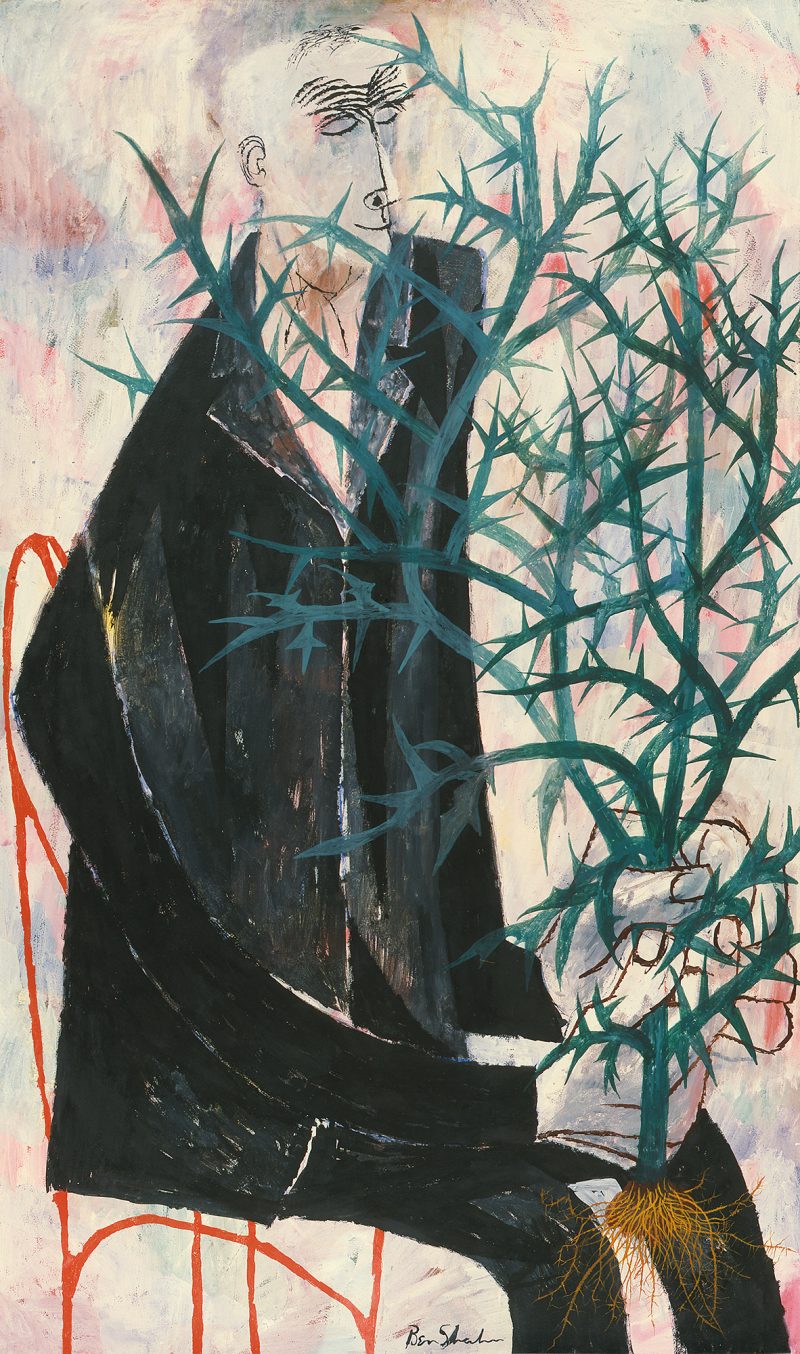
Blind Botanist, The
Shahn, Ben
1954
Artwork Information
-
Title:
Blind Botanist, The
-
Artist:
Shahn, Ben
-
Artist Bio:
American (born in Lithuania), 1898–1969
-
Date:
1954
-
Medium:
Gouache, acrylic, and ink on paper mounted on Masonite
-
Dimensions:
52 1/16 x 30 7/8 in.
-
Credit Line:
Wichita Art Museum, Roland P. Murdock Collection
-
Object Number:
M137.55
-
Display:
Not Currently on Display
About the Artwork
Born in Kovno, Lithuania, in 1898, Ben Shahn immigrated to Brooklyn in 1906. After working as a lithographer’s apprentice, Shahn studied biology at New York University, but he eventually returned to his childhood interest in art through studies at the City College of New York and the National Academy of Design. Shahn’s 1932 exhibition of paintings about the controversial Sacco and Vanzetti trial established his reputation as a politically engaged artist. During the Depression he worked for the Farm Security Administration as a painter and photographer documenting rural life. Shahn designed posters for the Office of War Information during World War II and created graphics for the Political Action Committee of the Congress of Industrial Organizations. After the war Shahn exhibited internationally and was well-known as an advocate for human rights.
The Blind Botanist of 1954 portrays an elderly, sightless, black-suited man seated in a wiry red chair and grasping a thorny green vine. The painting dates from the post-war period when Shahn’s work shifted from social realism, which addressed specific issues, to “personal realism,” which was both universal and ambiguous in its content.1 In answer to a query about The Blind Botanist’s meaning, Shahn stated: “My own concern was to express a curious quality of irrational hope that man seems to carry around with him, and …to suggest the unpredictable miraculous vocations which he pursues.”2
When Shahn returned to the same image in graphic work in the early 1960s, he included on two prints a quotation from Robert Hooke’s Micrographia of 1664:
“So many are the links, upon which the true philosophy depends, of which if one be loose or weak, the whole chain is in danger of being dissolved; it is to begin with the Hands and Eyes, and proceed on through the memory; to be continued by the reason; nor is it to stop there, but to come to the Hands and Eyes again..?”
These cautionary words are taken from Hooke’s book on the wonders of the microscope, an important work in the burgeoning scientific climate of the seventeenth century, which Shahn had probably come to know through his study of biology. Shahn was deeply concerned about contemporary experimentation; he was active in the peace movement, and made posters advocating the banning of nuclear testing. On 1 March of 1954, the year The Blind Botanist was painted, the United States detonated a hydrogen bomb with catastrophic results: the crew of a nearby Japanese ship suffered deadly radiation poisoning. In the early 1960s, at the same time as his return to the blind botanist imagery, Shahn created illustrations for an article in Harpers magazine about this appalling event. In The Blind Botanist, the image of the oblivious scientist whose huge hands support the threatening specimen serves as a visual echo of Hooke’s admonition for prudence in scientific experimentation.
The Blind Botanist, engaging in its simplicity, is a mysteriously potent work by the artist, who said, “If the sense of the painting is fugitive, that is as I have wanted it; I hope that the explanation itself will not be too fugitive, but still a little so.”4
1. Ben Shahn, The Shape of Content (Cambridge, Mass.: Harvard University Press, 1957), 40.
2. Ben Shahn, letter to Elizabeth S. Navas, 7 March 1955, registrar’s files, Wichita Art Museum.
3. For Shahn’s prints of the blind botanist theme, see Kenneth W. Prescott, The Complete Graphic Works of Ben Shahn (New York: Quadrangle, 1973), 47-52. Shahn’s exact rendition of the quote from Hooke is cited on p. 48.
4. Shahn to Navas, 7 March 1955.